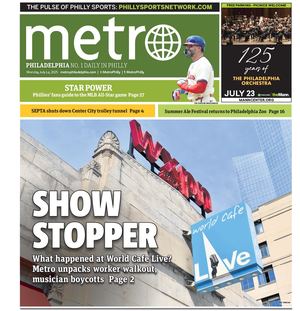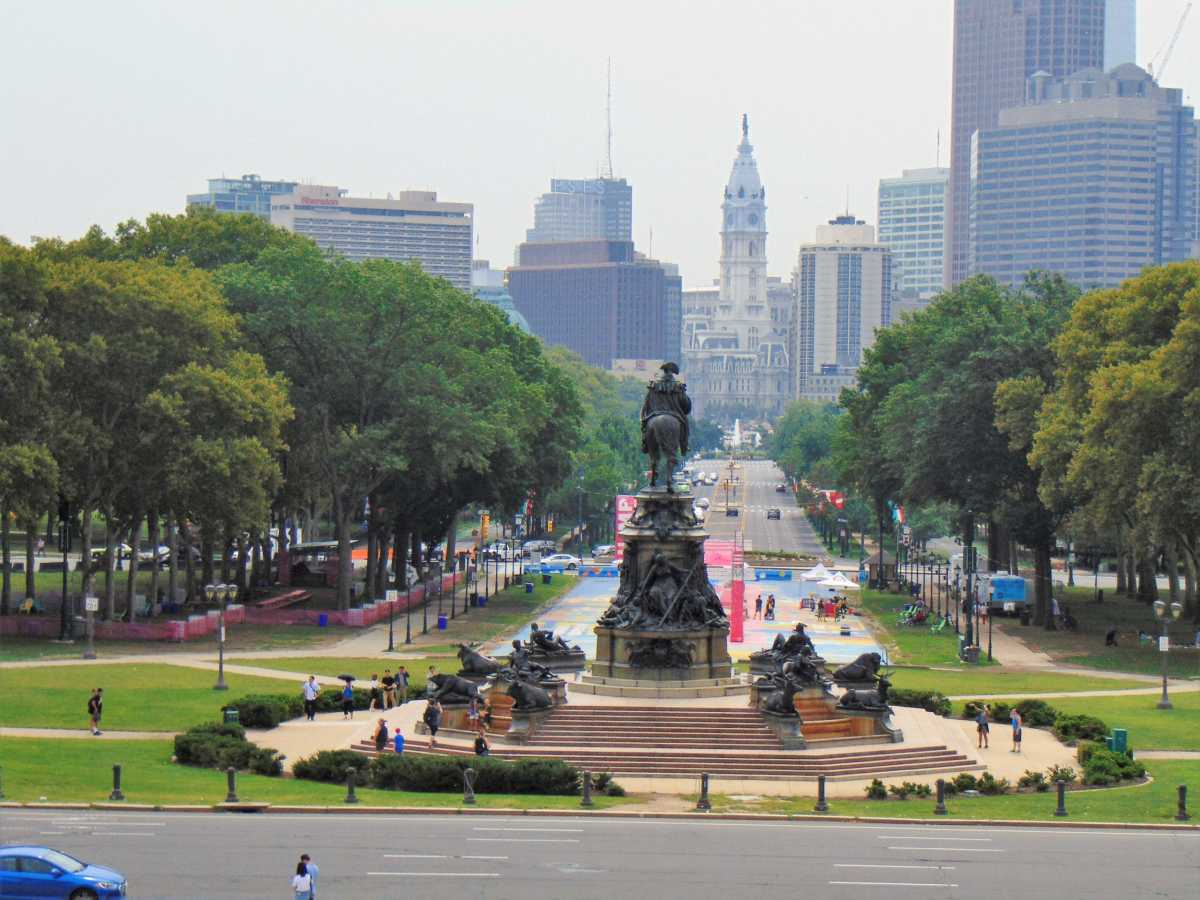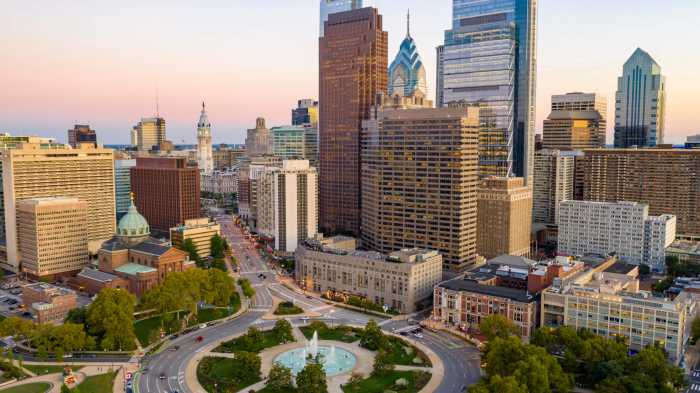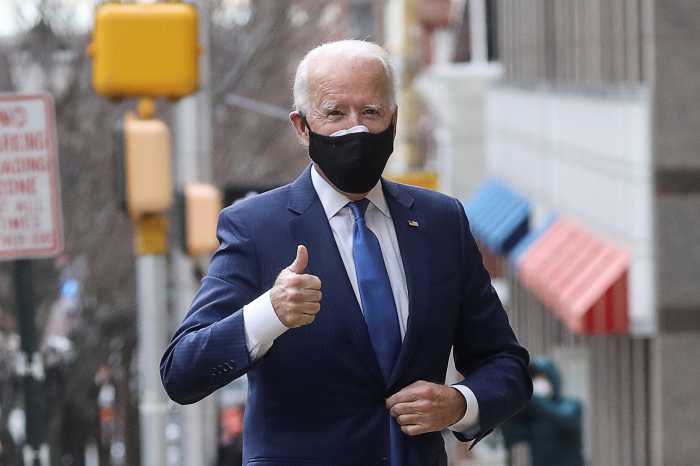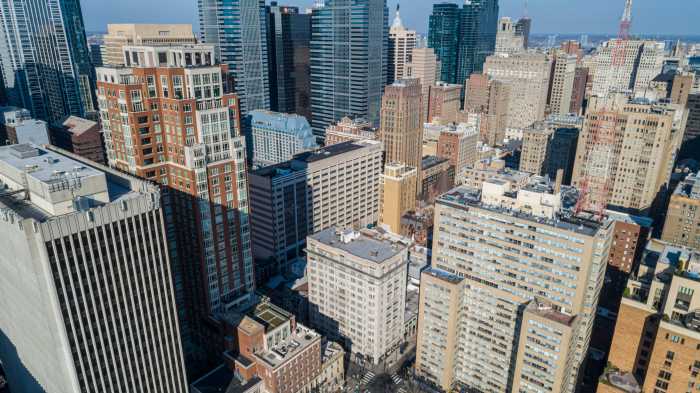City leaders are hoping to overhaul the Benjamin Franklin Parkway in time for the 250th anniversary of the signing of the Declaration of Independence.
Mayor Jim Kenney’s administration on Friday called on design firms to submit proposals to improve the Parkway for pedestrians and cyclists and reinvent under-utilized areas between 20th Street and the Philadelphia Museum of Art.
Whoever is awarded the $381,000 contract will be tasked with creating “a world-class public realm plan for pedestrian-centric, permanent changes that will dramatically improve the appeal, use, safety, functionality and beauty of the Parkway,” the city said in a news release.
Design agencies have until April 16 to submit ideas for the project, with several finalists selected by June 1. Those firms will conduct a series of public presentations, and the contract is expected to be awarded in July.
The plan is to have a final design next winter and implement “key aspects” of the project before the Semiquincentennial celebrations in 2026, according to the requests for proposals document.
Like the Bicentennial in 1976, Philadelphia is expected to play a major role in the festivities.
Kenney’s administration is also working with a transportation consultant to transform Eakins Oval, at the Parkway’s northern end, into park space by potentially closing traffic in front of the Art Museum and eliminating the Parkway’s outer lanes.
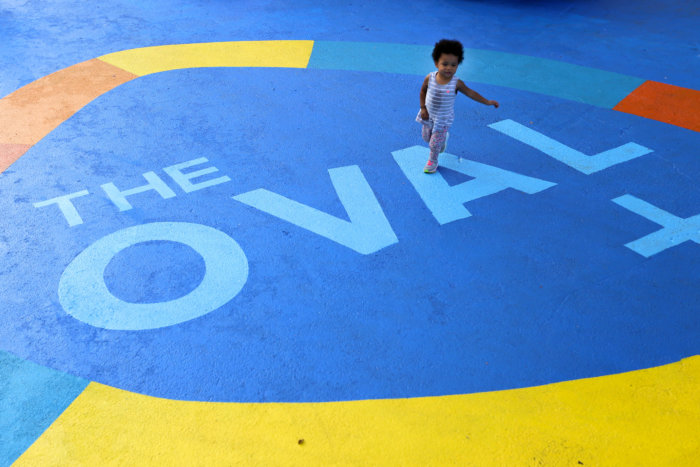
Inspired by the Champs-Élysées in Paris, the Parkway was designed in 1917 after being proposed in the 1870s to connect the downtown to Fairmount Park.
Eakins Oval was enlarged in the 1960s to create a circle and parking lot as a way to improve traffic flow in the area.
The Parkway’s museums and events attract more than 3 million people annually, according to the city.
Over the past year, it became a central location for protests following the killing of George Floyd at the hands of police, and a homeless protest encampment occupied a neighborhood field for months.
The RFP instructs designers to approach the plan with the Black Lives Matter demonstrations and coronavirus pandemic in mind.
Following a 2013 report, called “More Park, Less Way,” the city has bolstered pedestrian markings along the Parkway and added rumble strips and delineator posts in a bid to slow down traffic.
About $20 million was spent on street-level improvements when the Barnes Foundation relocated to Center City nearly 10 years ago.
“Today’s Parkway is more welcoming to foot traffic than any time in recent memory,” said Michael Carroll, Kenney’s deputy managing director for transportation, in a statement.
Construction is currently underway on the Winter Street Greenway, a new playground and dog park near 22nd Street and the Parkway. Officials anticipate the project will be completed next winter.
A park is also being built on 22nd Street just south of the Parkway to serve as a home for “Maja,” a sculpture by Gerhard Marcks that has been in storage for 25 years. The piece previously stood outside the Art Museum.
